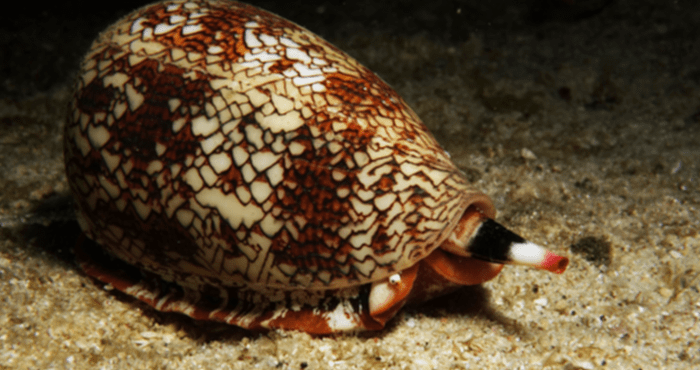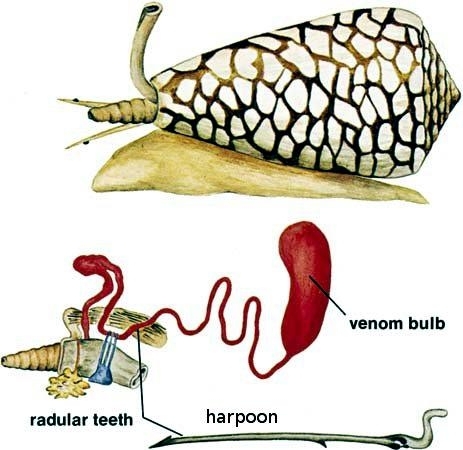
Physical CharacteristicsĪll cone snails are wide at one end and narrow at the base (the typical “cone” shape). Most cone snails live in relatively shallow water near coral reefs, hiding in the sand, under coral shelves, or under or near piles of rubble.

Generally temperate to tropical oceans, including the Indian and Pacific Oceans, southern Australia, Great Barrier Reef, Hawaii, Baja California, and California. These animals are not currently on exhibit at the Aquarium. This material may not be published, broadcast, rewritten or redistributed.SPECIES IN DETAIL Cone Snails (General Description)ĬLIMATE CHANGE: Not Applicable At the Aquarium In Photos: The Power of Poison Through TimeĬopyright 2015 LiveScience, a TechMediaNetwork company. Follow Live Science, Facebook & Google+. 19 in the journal Proceedings of the National Academy of Sciences.įollow Laura Geggel on Twitter. Studying the insulin's function and structure may help researchers develop new therapeutic drugs for diabetes, Safavisaid. The fishlike insulin found in the cone snails is also the shortest insulin ever reported, which may reflect its streamlined role in decreasing blood sugar levels in prey, the researchers said. "If we can attune drugs to be more selective using recipes used from cone snails, maybe, just maybe, we can build better drugs." "A lot of drugs have side effects, and the side effects are based on being nonselective," Bingham said. Perhaps researchers can learn drug development techniques based on the cone snails' success, he added. tulipa developed insulin with a similar chemical structure to fish insulin over millions of years, transforming it into an extremely selective weapon, Bingham said. The finding "is unique and novel," said Jon-Paul Bingham, an associate professor of molecular bioscience and bioengineering at the University of Hawaii, who was also not involved with the study. "Just as we thought there is everything to be known about insulin, somebody was able to see that you can isolate insulin to target prey,” said Frank Mari, a professor of chemistry and biochemistry at Florida Atlantic University in Boca Raton, Florida, who was not involved in the study.

This suggests that certain species of cone snails have honed their weaponized insulin to imitate that of their prey’s, the researchers said. For instance, some cone snails that eat worms also produce insulin that is similar to worm insulin. The weaponized insulin also varies depending on the snail's preferred diet. When the researchers injected the insulin into zebrafish, the fish became less active in less than a minute, even though the fish started the experiment with high blood sugar levels. What's more, the insulin resembles fish insulin, making it an effective tool against the snails' preferred prey. This is the first reported case of any animal using insulin in its venom, Safavi said. In the past, researchers have used cone snail venom to develop medications, such as the painkiller ziconotide (brand name Prialt), a drug that is 1,000 times more potent than morphine and was designed to mimic a toxin produced by the Conus magus cone snail. More than 100 species of these 6-inch-long (15 centimeters) underwater predators are known to release complex toxins that paralyze prey. Safavi and her colleagues found the weaponized insulin when they were screening venoms from various cone snails. "It's very unique that an animal has come up with a way to target metabolism in prey." "The snail has a very large mouth, and it kind of catches the fish within the large mouth," said the study's lead researcher, Helena Safavi, a research assistant professor of biology at the University of Utah. Within moments, they don't have the energy to swim away to escape being eaten alive.

The sudden influx of insulin can enter their gills and get into their bloodstream. When these stealthy aquatic snails approach their prey, they release insulin, a hormone that can cause blood sugar levels to plummet. At least two species of cone snailhave turned insulin into an underwater weapon, a new study finds.


 0 kommentar(er)
0 kommentar(er)
